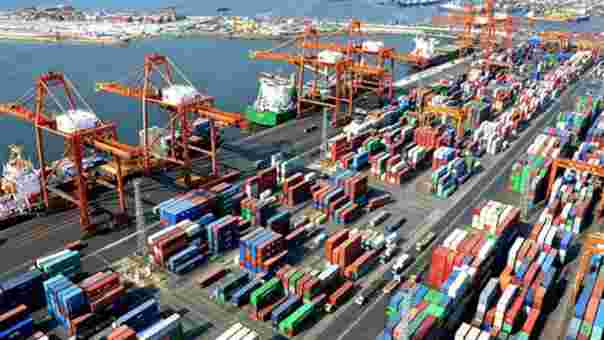Karachi, January 14, 2025 – The Port Qasim Authority (PQA) has announced the detailed shipping schedule for Tuesday, January 14, 2025, showcasing the strategic importance of Port Qasim in managing diverse cargo operations.
This comprehensive schedule highlights the berthing of vessels handling liquefied natural gas (LNG), containers, steel coils, coal, cement, rice, liquefied petroleum gas (LPG), and palm oil.
Key Berthing Details:
1. M.T. AL THAKHIRA
o LNG carrier with a capacity of 141,286 metric tons is scheduled to berth at Port Qasim’s PGPCL terminal at 10:00.
o Handled by GSA (Pvt.) Ltd., the vessel exemplifies the port’s critical role in energy imports.
2. M.V. MAERSK SARATOGA
o A container vessel will dock at QT2-II terminal at Port Qasim at 10:00.
o Managed by Gulf Maritime, it underscores the port’s containerized trade capabilities.
3. M.V. CENTURION BUYO
o This steel coil carrier, with a manifest quantity of 30,126 metric tons, will berth at M/W-I terminal at 12:45, demonstrating Port Qasim’s contribution to industrial supply chains.
4. M.V. BRITAIN BAY
o Coal shipment of 53,275 metric tons is scheduled at PQEPT terminal at 12:45.
o Port Qasim’s infrastructure supports energy sector imports, handled by Al-Pine Marine.
5. M.V. DULCE DIVA
o Carrying 40,350 metric tons of cement, this vessel will dock at M/W-II terminal at 13:00.
o The operation, managed by Global Maritime, reflects Port Qasim’s role in the construction industry.
6. M.T. FENJA BULKER
o With a rice shipment of 14,700 metric tons, this vessel will berth at FAP terminal at 14:45, reinforcing Port Qasim as an export hub.
7. M.T. KAISA I
o LPG shipment of 3,300 metric tons is slated for EVTL terminal at 17:30, managed by Merchant Marine Services.
8. M.T. MARITIME KELLY ANNE
o A palm oil carrier will berth at LCT terminal at 18:30, with a capacity of 26,000 metric tons, handled by Al-Pine Marine.
The consistent operational efficiency at Port Qasim underscores its vital role in supporting Pakistan’s trade infrastructure and economic growth. From energy resources to industrial goods, the port’s handling capabilities continue to enhance national and international trade dynamics.
